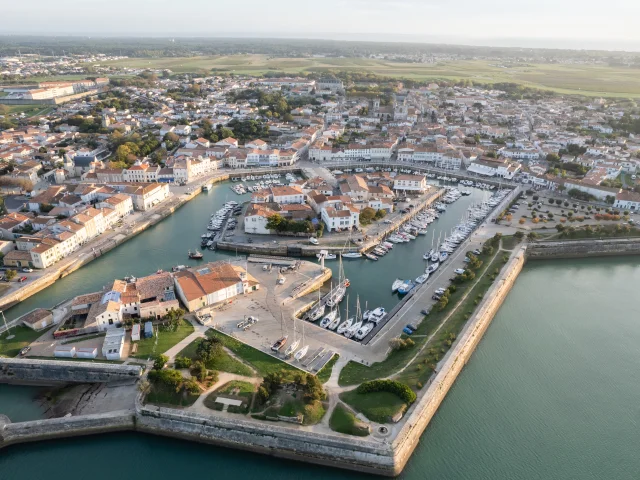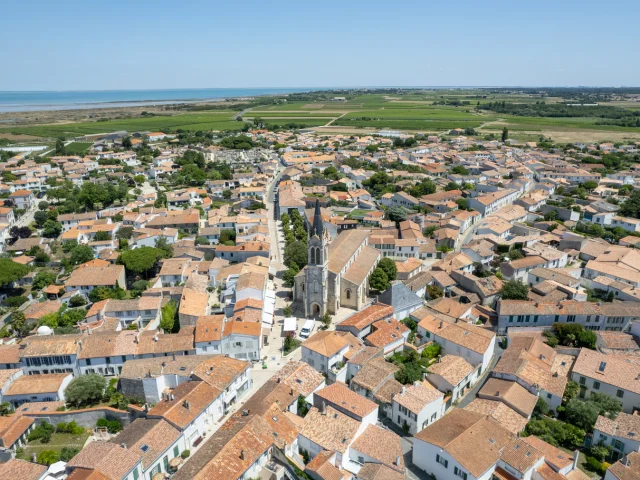Authenticity and charm preserved in a remarkable environment
To come to Loix is to indulge in a host of enchanting natural landscapes along the way and once you’re here. With its 670 hectares, between land and sea, and its 14 kilometers of coastline bordered by the Atlantic, the proud Ars and the salt marshes, the Loix peninsula has found a balance between economic dynamism and environmental protection. This small village truly flourishes in the heart of nature. In fact, it’s said that you don’t pass through Loix, but you go there, and not for nothing.
The village is linked to the rest of the Ile de Ré by two cycle paths, one of which runs along the harbour, offering a different view of Loix at every turn. This path leads to one of the most beautiful panoramas in the Retais landscape: the passage of the tide mill, the last magnificent vestige of the golden age of the salt trade. In fact, its salt trail winds through olive groves and salt marshes, along delicate wooden footbridges to the salt marsh ecomuseum.
Loix, with its 735 or so inhabitants, invites you to relax and unwind. Tranquil by nature, as evidenced by its Cittaslow label, it’s the ideal setting to take your time and discover the typical alleyways that make it one of the most authentic villages on the Ile de Ré, even today. And who knows, maybe you’ll come across a curiosity like the colorful and richly illustrated street signs.


















